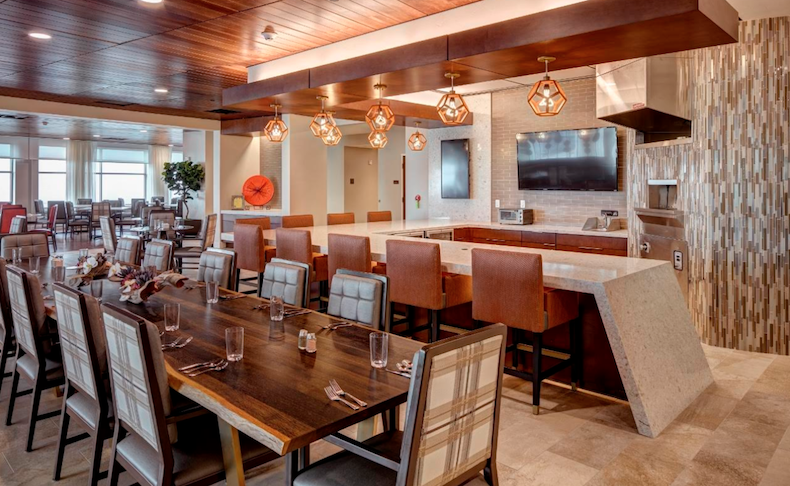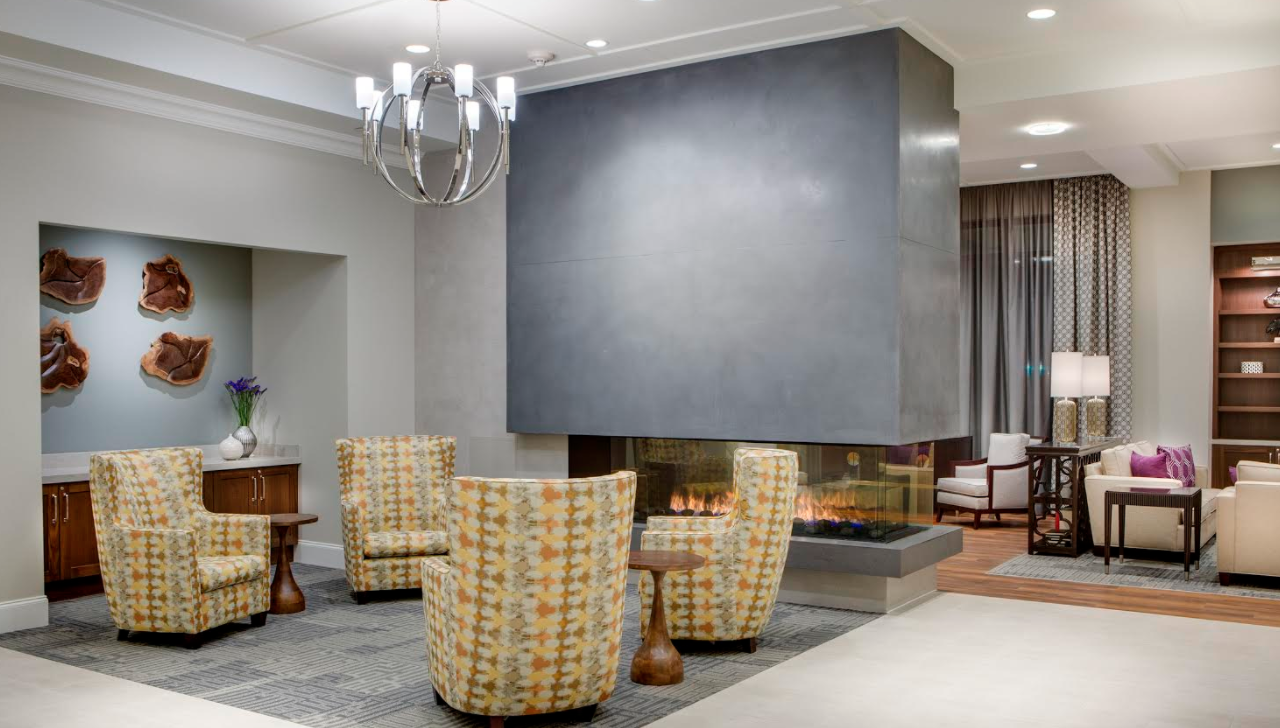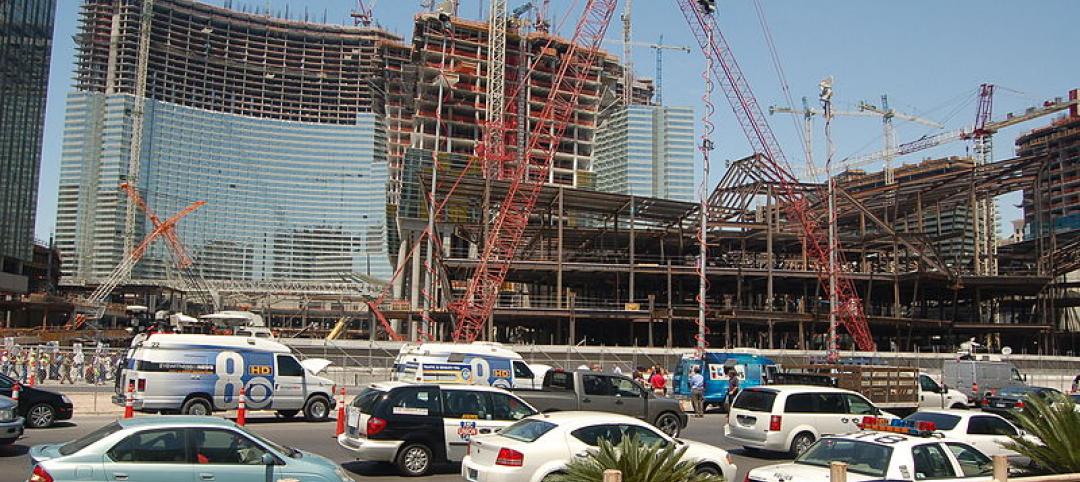A trend is defined as a state of fashion or the general direction in which something is developing or changing. At studioSIX5, an interior design firm focused on senior living facilities, designers are helping senior living communities stay fashionable and ahead of the game, taking the lead as the change agents of the senior living industry.
As 2018 kicks off, the studioSIX5 team has forecasted the following trends for the senior living market:
• Designing boutique and upscale communities for seniors and their baby boomer family members has been at the forefront of design considerations. But employee retention has become a new focus. Senior living communities are looking at ways they can cater to their employees’ needs in ways which result in increased efficiency and job satisfaction. Not only do operators want employees to feel comfortable while doing their job, they want them to feel valued as team members providing valuable care to residents.
• While integrated technology is now a norm, studioSIX5 anticipates that 2018 will bring about a heavier focus on building scalable technological capabilities into community infrastructures.
• The boom of building more urban communities in 2017 is creating a push to integrate senior living communities into master-planned communities, where amenities like salons, dining areas, and fitness centers are public-facing to encourage increased socialization with the community at large.• Designers are encouraging providers to include accent pieces and décor with local flavor, creating a sense of history and pride of place within a space. Mass-produced items have less character and feel less personal.
 LED lighting is being incorporated beyond just saving energy and is being used more and more to promote healthy sleep patterns and reduce anxiety by aligning lamp color temperature with residents’ circadian rhythms. Photo: studioSIX5
LED lighting is being incorporated beyond just saving energy and is being used more and more to promote healthy sleep patterns and reduce anxiety by aligning lamp color temperature with residents’ circadian rhythms. Photo: studioSIX5
• Consumer demand is causing manufacturers to embrace senior living requirements when designing products, materials, and furnishings. This rise in availability and variety will bring about more aesthetically-pleasing, functional products and furnishings for senior living.
• The use of less restrictive cooking technologies such as hoodless cooking, sous vide, and induction ranges will expand farm-to-table offerings and menu offerings to higher levels of care.
• Spaces with multiple uses and flexibility are still popular, but instead of having an area deemed as the “multipurpose room,” providers are looking at amenities that they can combine to serve a variety of purposes. For example, instead of having both a library and a coffee shop, they are combining the two.
• LED lighting is being incorporated beyond just saving energy and is being used more and more to promote healthy sleep patterns and reduce anxiety by aligning lamp color temperature with residents’ circadian rhythms.
• Luxe environments are moving beyond an understated elegance toward designs featuring jewel tones, mixed metals, and lush fabrics, allowing designers to create opulent custom pieces tailored to meet the needs of seniors.
• Senior living operators are creating opportunities for purposeful engagement in programming and operations, rather than simply providing activities. This encourages residents to participate in actual daily activities like meal prep, laundry, and gardening. The three zones of socialization will be used to create spaces which promote integration for each resident’s choice of socialization.
 Designers are encouraging providers to include accent pieces and décor with local flavor, creating a sense of history and pride of place within a space. Mass-produced items have less character and feel less personal. Photo: studioSIX5
Designers are encouraging providers to include accent pieces and décor with local flavor, creating a sense of history and pride of place within a space. Mass-produced items have less character and feel less personal. Photo: studioSIX5
Related Stories
| Jul 2, 2014
Emerging trends in commercial flooring
Rectangular tiles, digital graphic applications, the resurgence of terrazzo, and product transparency headline today’s commercial flooring trends.
| Jun 30, 2014
Research finds continued growth of design-build throughout United States
New research findings indicate that for the first time more than half of projects above $10 million are being completed through design-build project delivery.
| Jun 18, 2014
Arup uses 3D printing to fabricate one-of-a-kind structural steel components
The firm's research shows that 3D printing has the potential to reduce costs, cut waste, and slash the carbon footprint of the construction sector.
| Jun 12, 2014
Austrian university develops 'inflatable' concrete dome method
Constructing a concrete dome is a costly process, but this may change soon. A team from the Vienna University of Technology has developed a method that allows concrete domes to form with the use of air and steel cables instead of expensive, timber supporting structures.
| May 29, 2014
7 cost-effective ways to make U.S. infrastructure more resilient
Moving critical elements to higher ground and designing for longer lifespans are just some of the ways cities and governments can make infrastructure more resilient to natural disasters and climate change, writes Richard Cavallaro, President of Skanska USA Civil.
| May 20, 2014
Kinetic Architecture: New book explores innovations in active façades
The book, co-authored by Arup's Russell Fortmeyer, illustrates the various ways architects, consultants, and engineers approach energy and comfort by manipulating air, water, and light through the layers of passive and active building envelope systems.
| May 19, 2014
What can architects learn from nature’s 3.8 billion years of experience?
In a new report, HOK and Biomimicry 3.8 partnered to study how lessons from the temperate broadleaf forest biome, which houses many of the world’s largest population centers, can inform the design of the built environment.
| May 13, 2014
19 industry groups team to promote resilient planning and building materials
The industry associations, with more than 700,000 members generating almost $1 trillion in GDP, have issued a joint statement on resilience, pushing design and building solutions for disaster mitigation.
| May 11, 2014
Final call for entries: 2014 Giants 300 survey
BD+C's 2014 Giants 300 survey forms are due Wednesday, May 21. Survey results will be published in our July 2014 issue. The annual Giants 300 Report ranks the top AEC firms in commercial construction, by revenue.
| Apr 29, 2014
USGBC launches real-time green building data dashboard
The online data visualization resource highlights green building data for each state and Washington, D.C.

















